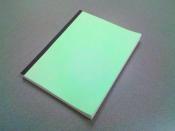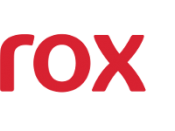Break-even AnalysisThe break-even point for a Book-In-Time process cannot be measured in terms of time. Assuming the book can be manufactured to make a certain margin, there would be no need to sell a certain amount of books. The only cost that you could analyze using break-even would be the cost of the equipment needed to print on demand.
Assuming that a book company can sell a typical 300 page paperback book for $25, it would take close to one million books to break-even on the cost of all the equipment. However, this is based on two assumptions. The first is that the equipment purchased can help save space, building rents, and overall indirect overhead so that it would total 15% of the total publisher's selling price of $13. The second assumption is that the company publishing the books with this equipment did not previously own any piece of the equipment in the process as part of another or current operation.
If a company did only have to buy only certain pieces of the equipment, it would take a lot less time to break even.
The total US book market for a year is roughly 230 million. For a company to sell one million books in a year to cover the cost of equipment would be difficult, but not impossible. The book market is diluted and assuming the new book company could gain a market share of .25%, it would break-even. This, however, does not take into account certain large sections of book categories that could be tapped into.
Plan of ActionThe plan of action that should be followed is to have Xerox undertake the task of selling the Book-In-Time system of equipment to all potential buyers in the value chain. Some potential customers, such as commercial printers, already own...


